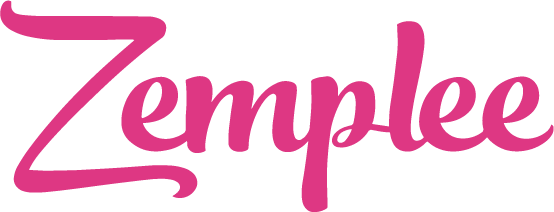
For elderly care provider organizations, each day bring new challenges – increased demand for services ranging from managing chronic conditions to a complete set of nursing home activities. Whether it is functions like managing resident records, billings, care plans and treatments or providing comfortable, well-appointed living spaces and enrichment activities for people with diverse needs. Keeping up with these demands, predicates that elderly care providers adopt and use different types of technology to support their operations. Therefore, elderly care providers have to periodically perform a technology needs assessment for their business.
We’re now
living in the age of the
Internet of Things, in which millions of devices ranging from phones to
“smart” cars, refrigerators and even entire city infrastructures can be in
constant communication by advances in cloud-based computing. Innovations in
machine learning allow those devices to make decisions and initiate processes,
often without the need for any human input at all.
This new
digital world has
profound implications for elderly care providers. Cloud based data
management allows doctors and caregivers to access patient information in
seconds. Telemedicine portals and wearable devices let patients manage many
aspects of their own care and share information with their provider team at, track
progress around the clock and provide on the spot recommendations. Artificial
intelligence can deliver preemptive care and with the power of data, predict
and prescribe and aid in proactive management of care or the business of care.
For these reasons, nursing homes, assisted living facilities, and other types of services for seniors need to rapidly adapt and reap the benefits of digital transformation. Wider use of technology will assist elderly care providers in their mission for providing the highest level of care for their clients, in a scalable, sustainable, and cost-effective way.
Technology Needs Assessment is a foundational step in technology implementation for an organization. In its simplest form, it starts with asking questions like these:
- What problem are we trying to solve?
- What goal do we want to achieve?
- What are the pros and cons of technology we already have in use?
- Do we have the right technology?
Here are 5 essential that describe how to do a comprehensive technology needs assessment in elderly care organizations
1. Surveying Stakeholders
The most crucial step in any technology implementation is to get stakeholders rallying around the introduction of a new technology. Any technology implementation is first and foremost a change management mission. Hence, the earlier in the process the stakeholders are involved, the easier to get their buy in, and a more successful implementation outcome.

The best way for elderly care providers to get a stakeholder buy-in is through a survey. The survey can be formal or informal. The goal is to understand if the prevalent technology solutions work well, what the frustrations are, where and how they fall short of the desired productivity requirements, broad usability and adoption.
Technology is often expected to increase morale, which directly influences the customer experience. Ultimately, if the chosen technology does not impact productivity and staff morale, business suffers. Consequently, for elderly care providers, maintaining a high morale of their staff is important. It directly impacts quality of care and the client experience.
2. Functional Assessment and Inventory of existing Technology and Processes
The next step in this process is to perform a thorough review of the technology being used in the elderly care facility. In today’s world, technology changes rapidly and it is not uncommon that most technology outdates itself in a fairly short period of time.
Furthermore, it is important to understand the different functional areas. Manual, repetitive tasks and activities are ideal low hanging fruits that can be scoped for automation. These can result in significant cost savings and automatically improve operations.
Often, newer technology opens up the possibility to doing business differently. For example, using chatbots to handle customer service requests, that was traditionally managed by a front desk person. To that end, thinking creatively and brainstorming can help in identifying different ways to achieve similar outcomes.
Once the functional assessment and technology inventory is complete, it is time to decide what is obsolete, what to retain and what to discard. A simple way to do this is to use the K-U-R-D approach. Keep, Upgrade, Replace, Discard. [$$]
Done diligently, the above steps will be important factors, when budget allocation decisions are to be made, further down the line.
3. Prioritization
The next step following Steps 1 and Step 2 above, is the process of prioritizing the different functional areas, where technology implementation is required.
There are several different methodologies to prioritize. It is best to stay with simple way processes like using Low-Medium-High or a timeline based method, for example – Need Now-Next Quarter-Next Year – and so on.

Prioritization will ensure, that the most pressing problems are being resolved and impacting the right business goals.
4. Map to Business Goals
In this phase, it is important to map the outputs of the above steps to business goals. The primary promise of any technology is “Cheaper, Faster, Better”. Business goals broadly fall into the following buckets ~
- Operational efficiency and cost savings
- Business (income, revenues)
- Customer experience and satisfaction
- Employee experience and satisfaction.
More importantly, quantifying business goals will also help in bringing objectivity into the process and simplifies decisions on trade-offs especially when budget allocation decisions have to be made. Quantitative goals also help stakeholders confident in their decisions and reduce buyer’s remorse.
5. Define Desired Technical Requirements
Finally, this next process is to define the desired technical requirements. Ideally, this should be done, with no reference to a framework of technology or product in mind.
For example, if this is about Caregiver scheduling, the ideal requirement should be defined as “Caregiver scheduling function – should alert the caregiver of her upcoming activity.”
Being purposeful about functional requirements which a technology or product can solve, will help during the selection process – which will be covered in our upcoming post.
In conclusion, it is recommended that a technology needs assessment be conducted periodically, ideally once in a year. This will help elderly care facilities, communicate the changing needs, work better with their technology providers and get better ROI on their technology investments.
This blog is part of Zemplee’s Educational Series blogs on Technology Implementation in Elderly Care Organizations.


